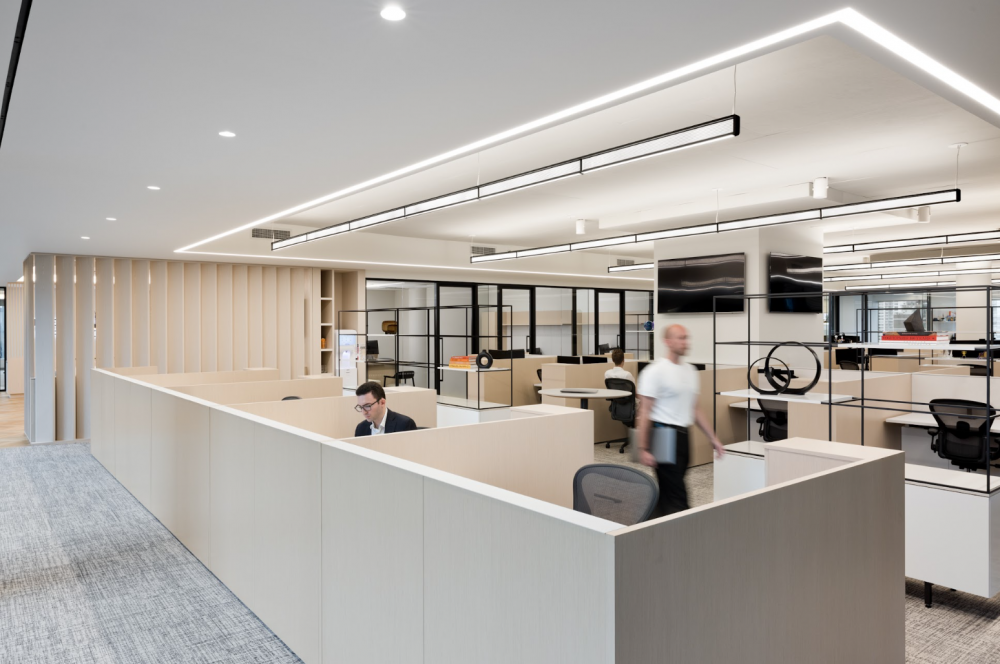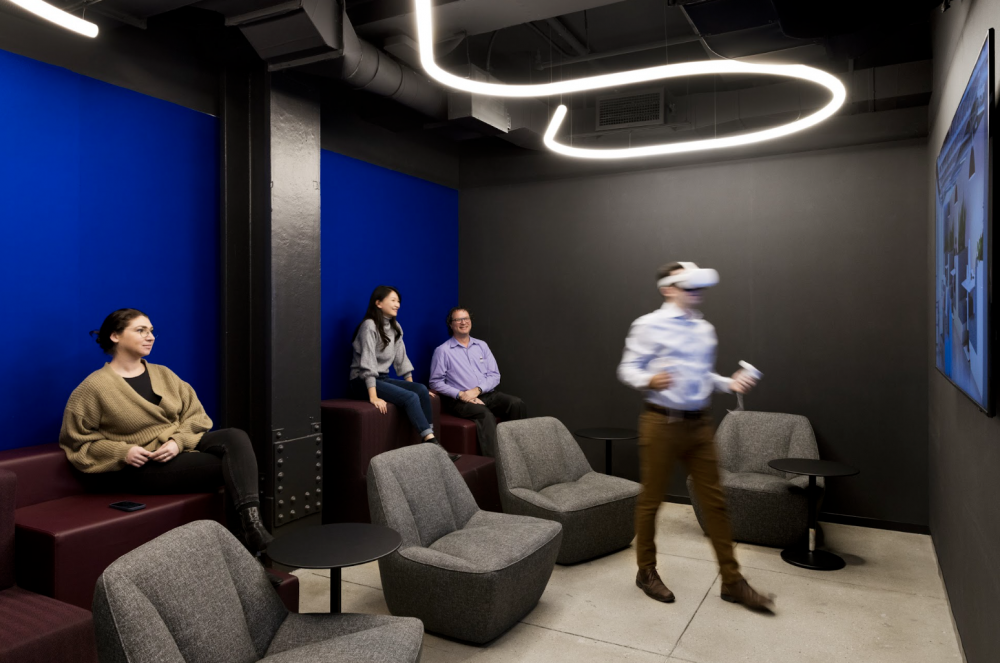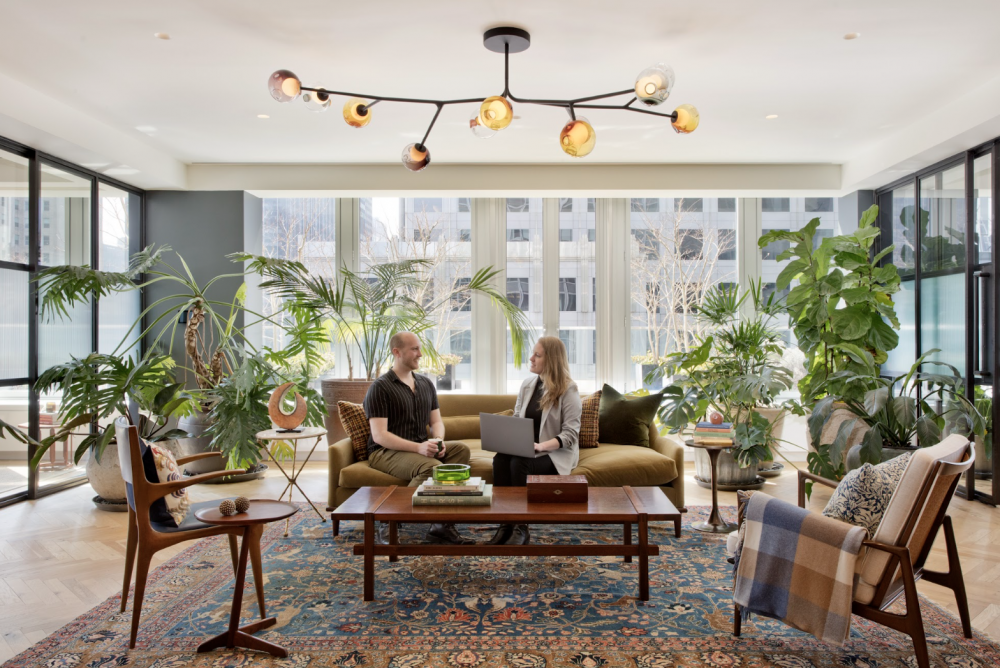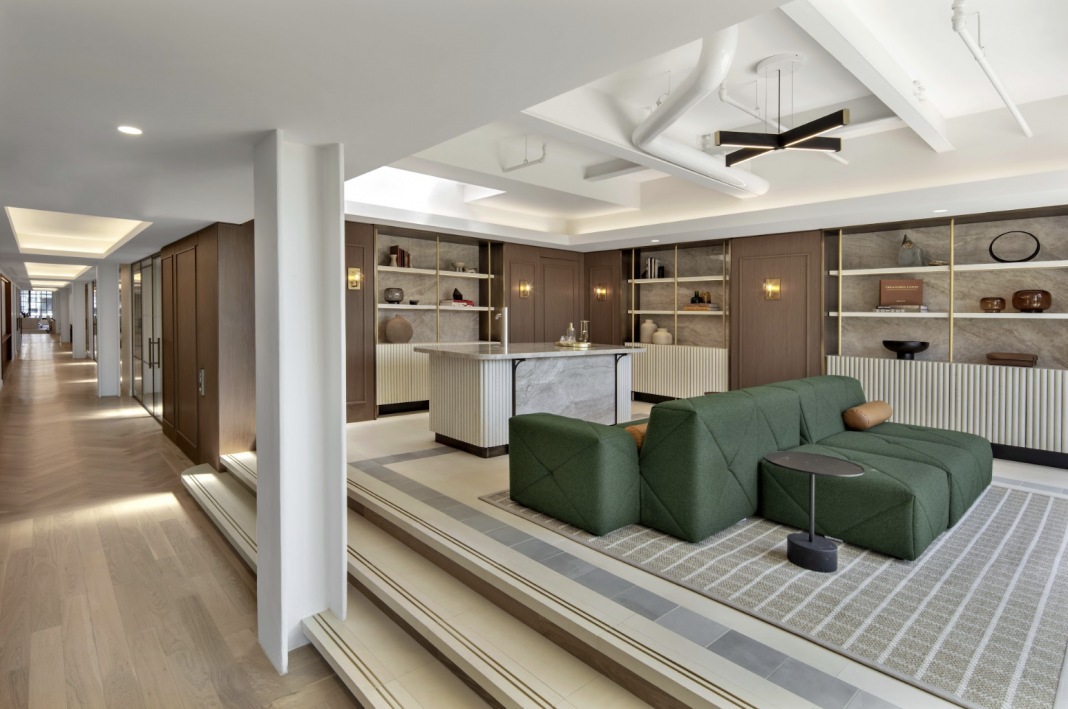As the workplace continues to evolve, one question looms large in the return-to-office conversation: What truly drives productivity?
It’s a deceptively simple concept, because for many organizations, defining where and how people do their best work is anything but straightforward. For some, peak performance is found in the freedom of home—free from commutes and full of flexibility. For others, it’s the structure, focus, and spontaneous collaboration of the office that fuels their flow.
how can a company craft a workplace strategy that respects individual needs while aligning with broader business goals?
It Begins with Purpose: Rethinking the Role of the Office
The first step is to stop viewing the office as just a physical location and start seeing it as a strategic tool. What role should it play in your organization’s success? Our workplace strategists always begin by asking this fundamental question. Using a mix of staff surveys, interviews, and workshops, we gather essential data to uncover both the nature of the work and the preferred environments for performing it.
Sometimes the answer is clear-cut. A data-heavy firm may find that solo work is best done remotely, making the office a hub for collaboration and client engagement. Others may see the office as the primary place for focus work, necessitating thoughtful design elements that minimize distractions and support deep concentration. Either way, it’s not about one-size-fits-all—it’s about designing a workplace strategy that meets people where they’re most productive.
Take A Macro to Micro Approach
Effective workplace planning requires both a big-picture and a granular perspective. Start at the macro level, assessing the organization’s strategic objectives, then dig deeper to understand the unique needs of individual departments. The daily needs of a finance team are likely quite different from those of an advertising team, even within the same company. An early discovery process can map out differing workflows and help to understand the workflow of cross-functional teams. This helps to determine whether a company should opt for flexible seating, workplace neighborhoods, or dedicated seats for individual departments.

Designing for Inclusivity
Productivity is deeply personal—there’s no universal formula, even among individuals in the same role or department. To foster truly effective work environments, designers and business leaders must recognize and embrace the spectrum of working styles, personality types, and cognitive differences within a team. While some employees thrive in dynamic, social spaces like cafés or hospitality lounges, others require calm, low-stimulus environments to concentrate and perform at their best. Designing for inclusivity means providing a variety of settings that support different sensory needs, interaction preferences, and modes of focus. A thoughtfully layered workplace offers not only physical flexibility but psychological safety, allowing every individual to choose the space that helps them thrive.

Don’t Underestimate Technology
Technology is a foundational element of workplace productivity and must be thoughtfully integrated into the design process from the start. One of the most frustrating comments a business leader can hear is that an employee’s tech setup works better at home. Part of your due diligence phase needs to be about determining how your organization uses technology, ensuring that actions like screen-sharing and connecting to virtual meetings are seamless. Even for in-office teams, Zoom calls are here to stay. If employees are expected to take virtual calls at their desks, acoustics in the open area must be carefully considered. Increase spacing between workstations, incorporate acoustic ceiling treatments, and use carpet to reduce noise transmission. Equip each desk with a quality headset and localized acoustic treatments to minimize sound bleed and distractions. Technology is another highly-individualized component of a workplace with nuances that vary widely for different industries. At a law firm, for instance, camera height is of the utmost importance—appearing lower down than the opposing council can subtly influence perception.

Don’t Rely on Just the Data
We’ve looked at all the quantitative metrics for defining what productivity means for your organization. That said, relying too heavily on hard data leaves out the crucial, human part of the equation. Recent studies from Gallup showed how increased employee engagement is directly correlated to improved performance, and can even help companies withstand tough economic times. Designing to support company culture through thoughtful branding, hospitality zones, and personalized programming helps staff feel connected and engaged. There is an immense value to considering the qualitative elements of a workplace experience in balance with the quantitative measurements.
Differentiating Your Workplace Experience
At the end of the day, attendance rates and hitting deadlines are great indicators that your company productivity is high. Somewhat paradoxically, investing too heavily in workplace monitoring tools can lead employees to feel less trusted and become disengaged or even resentful. The best businesses lead with authenticity and trust, understanding that true measures of workplace performance go beyond the “bottom line.” What differentiates a workplace experience is when your people understand your brand and your mission, and feel a personal connection to its success.
Special Thanks to our Tech Fest Supporter:
Let’s design spaces that inspire our best work—and remain flexible to everything the future holds. Explore flooring solutions for 2025 and beyond.


